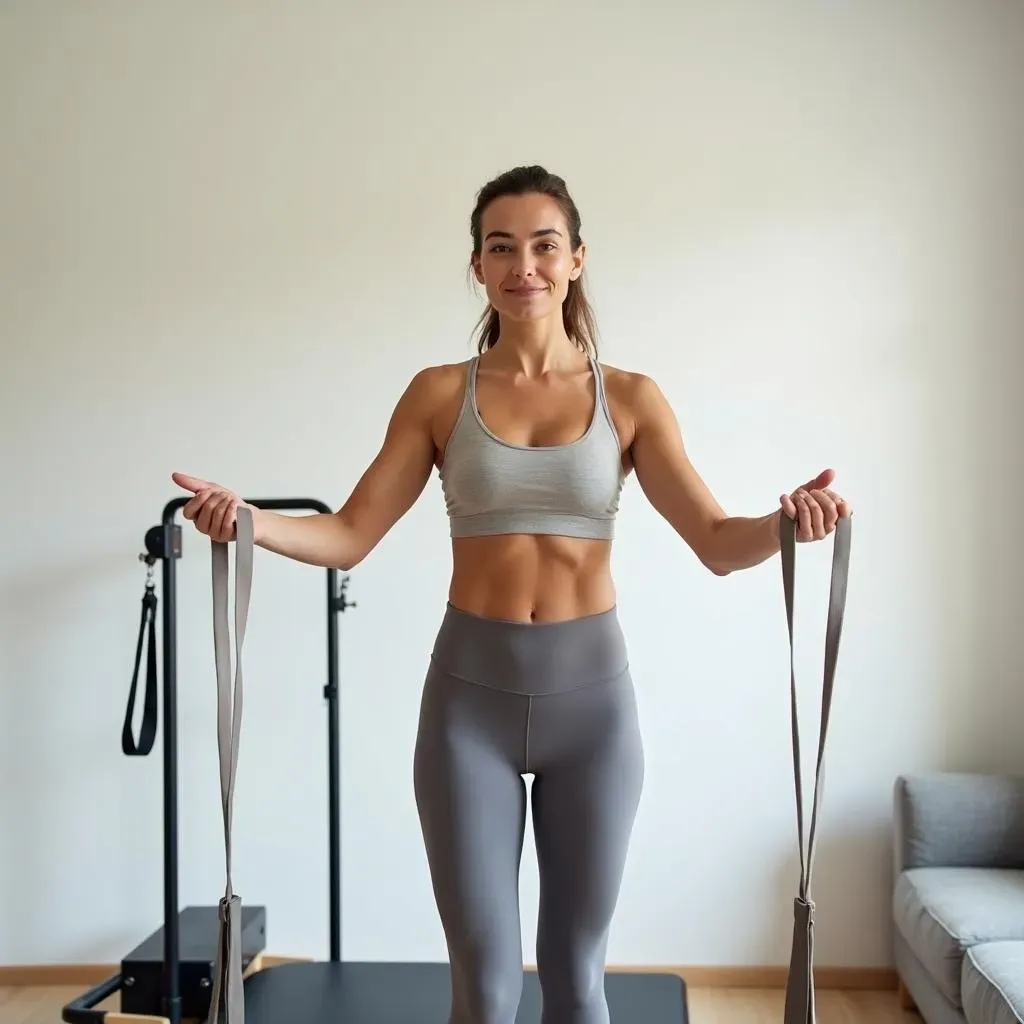Table of Contents
Trying to squeeze in a workout when life feels like it's moving at warp speed? Gym commutes eat up time, and sometimes you just don't want to leave the comfort of your own four walls. But what if those walls could actually *help* you get stronger? Enter the simple yet surprisingly effective world of using a wall for your fitness routine.
Getting Started with Your At Home Wall Pilates Workout
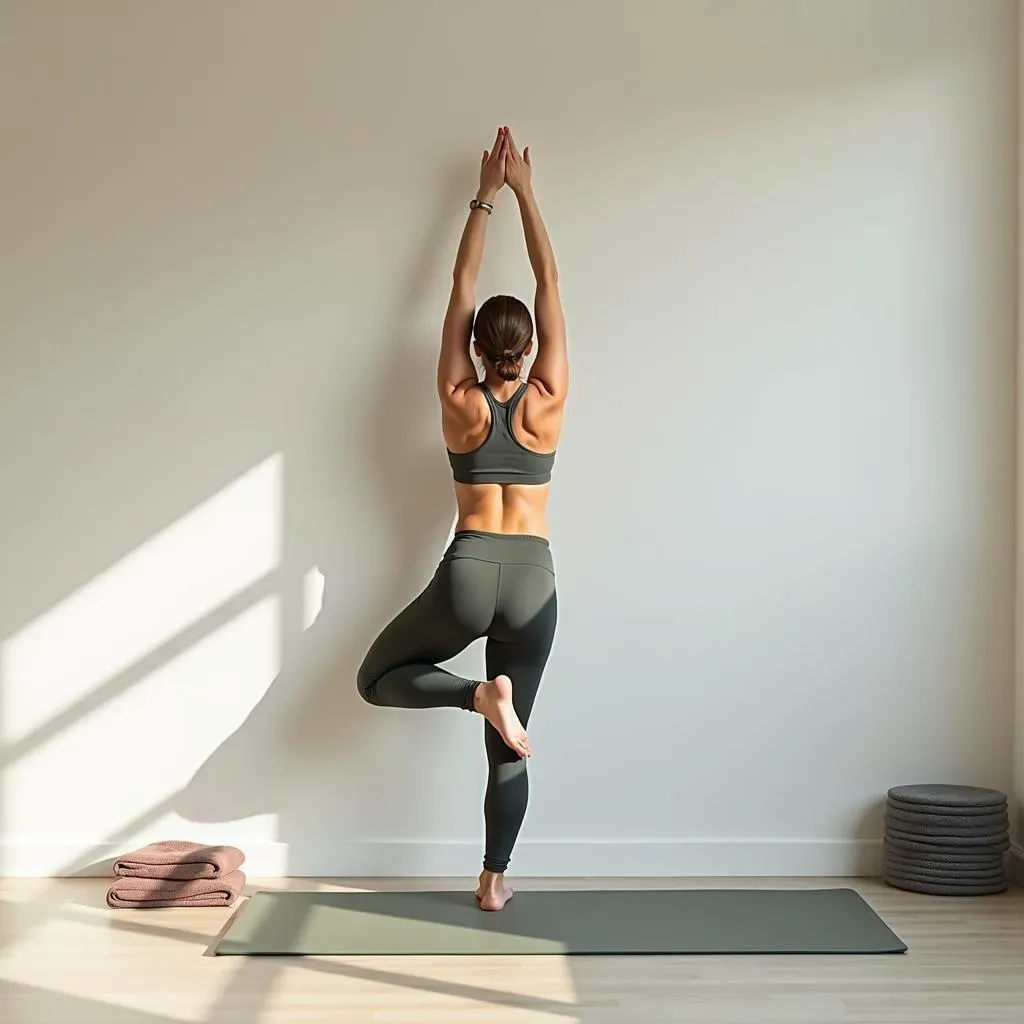
Getting Started with Your At Home Wall Pilates Workout
Finding Your Spot: Prepping for Wall Pilates
Alright, so you're ready to ditch the commute and get that core burning right where you are. First things first for your **at home wall pilates workout**: you need a wall. Sounds obvious, right? But not just any wall. Find a clear section, preferably one with a bit of floor space in front of it. You don't want to be tripping over furniture mid-roll-down. Make sure it's sturdy – leaning your full weight against drywall that hasn't seen a stud since the house was built might lead to an unexpected remodeling project. Clear the area. You'll need room to extend your legs, lie down, and generally flail around a bit (in a controlled Pilates way, of course).
What You Actually Need (Hint: Not Much)
Here’s the beauty of diving into an **at home wall pilates workout**: the equipment list is laughably short. A mat is pretty standard for any floor work, and it'll make lying on the floor much more comfortable, especially if your place has hardwood or tile. Beyond that? Maybe a small towel for neck support or wiping sweat (though hopefully, you're not *that* sweaty in Pilates). That's seriously about it. No fancy reformers, no resistance bands needed to start. Your body weight and the wall are your primary tools. This keeps the barrier to entry low, meaning you can stop making excuses and just start moving.
Ready to prep your space? Here's a quick checklist:
- Identify a clear wall section.
- Ensure the wall is sturdy.
- Clear floor space in front of the wall.
- Grab a mat (optional but recommended).
- Consider a small towel.
Essential Equipment (Spoiler: Mostly a Wall)
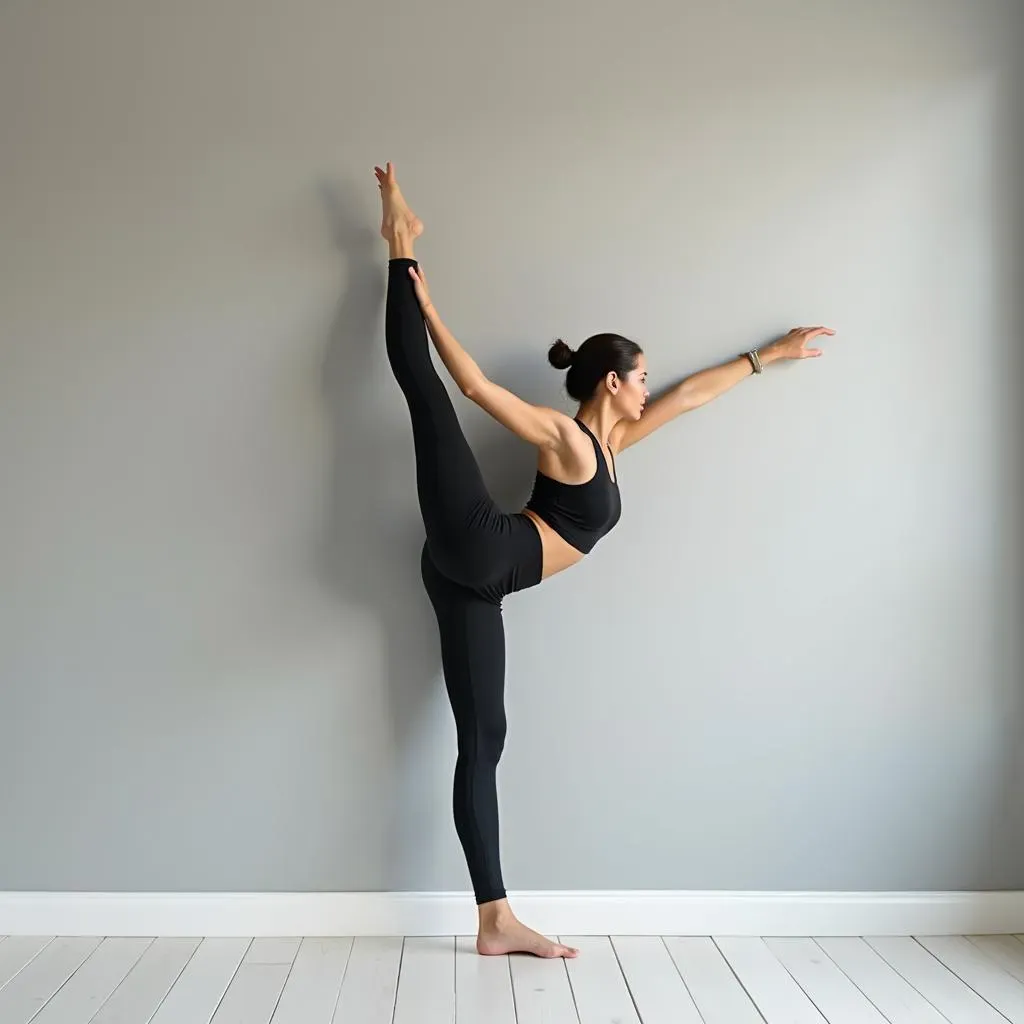
Essential Equipment (Spoiler: Mostly a Wall)
The Bare Necessities: Your Wall is Your Gym
Let's be real: one of the biggest hurdles to starting any new fitness routine is the gear. The endless scrolling through online stores, the decision fatigue, the dent in your wallet. Forget all that for your **at home wall pilates workout**. Seriously, the core piece of equipment is already built into your house. It's the wall. A plain, vertical surface. That's it. You don't need a membership, you don't need fancy machines with confusing pulleys. You just need a sturdy wall and enough space to lie down or stand next to it without knocking over your grandmother's vase.
Think of the wall as your personal trainer, offering constant feedback. Pushing your back into it helps you find neutral spine. Sliding your legs up and down provides resistance. Leaning against it supports balance. It's less about expensive gadgets and more about ingenious use of simple physics and body mechanics. This isn't some high-tech, exclusive club; it's using what you have to build strength and control.
Optional Upgrades (But Don't Sweat It)
while the wall is the star, a couple of non-essentials can make your **at home wall pilates workout** a bit more comfortable. A mat is highly recommended. Lying directly on a hard floor for exercises like The Hundred or bridging against the wall gets old fast. Your tailbone will thank you. Any standard yoga or fitness mat will do. Thickness is a personal preference – some like thin for stability, others prefer more cushion. A small towel can be handy, not just for sweat, but sometimes rolled up under your neck for support during supine exercises if you have a forward head posture. That's genuinely about the extent of it. No need to drop hundreds on resistance bands or specialized props when you're starting out.
It’s refreshing, isn't it? A fitness approach that doesn't require you to mortgage your house for equipment. Your body, a wall, maybe a mat. Done.
Item | Necessity Level | Why It Helps |
|---|---|---|
Sturdy Wall | Absolute Must | Support, Resistance, Alignment Cues |
Yoga/Fitness Mat | Highly Recommended | Comfort for floor work, Joint Cushioning |
Small Towel | Optional | Neck Support, Wiping Sweat |
Fancy Gadgets | Not Needed | Keep it simple, focus on fundamentals |
Key Moves for Your At Home Wall Pilates Workout
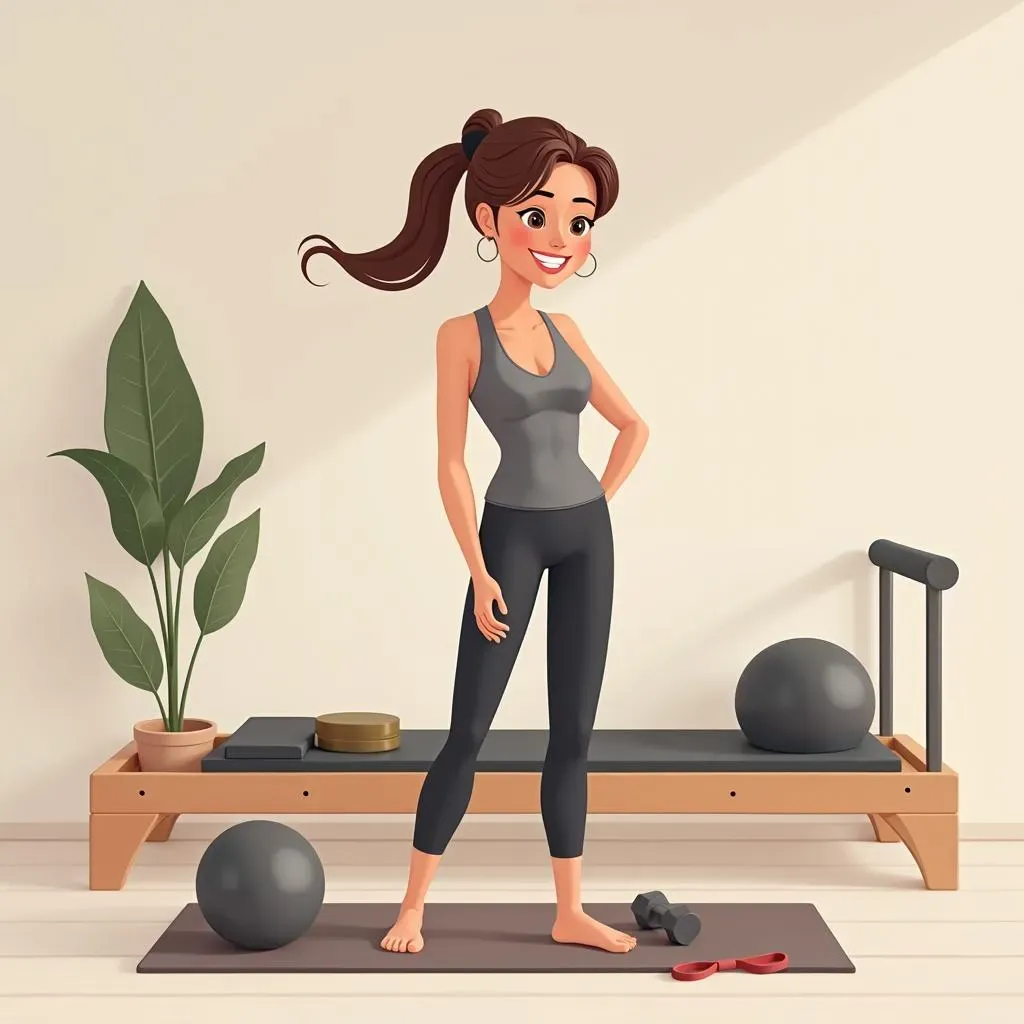
Key Moves for Your At Home Wall Pilates Workout
Building the Foundation: Essential Wall Pilates Exercises
Alright, let's get down to the actual moving part of your **at home wall pilates workout**. You've got your space, you've got your wall, maybe a mat. Now what? We start with the basics, the moves that build awareness and foundational strength. Think of these as your warm-up, but also crucial exercises in their own right. The Wall Roll Down is a classic for spinal articulation. Stand with your back against the wall, feet hip-width apart, a small gap between your lower back and the wall. Exhale, tuck your chin, and slowly peel your spine away from the wall, segment by segment, reaching towards your toes. Inhale at the bottom, then exhale to stack your spine back up, pressing each vertebra into the wall. It feels different than a regular roll down, the wall giving you feedback on where you're sticking.
Another fundamental is the Wall Squat. Stand with your back against the wall, feet about shoulder-width apart, a little distance from the wall. Slide down until your knees are bent at a 90-degree angle, like you're sitting in an invisible chair. Ensure your knees are tracking over your ankles and your back stays pressed into the wall. This might seem simple, but holding it fires up your quads and glutes while the wall supports your back, helping you maintain good form. These initial moves set the stage, making your body aware of its position in space relative to a fixed point.
Core Engagement Against the Wall
Pilates is famous for its focus on the core, and an **at home wall pilates workout** is no different. The wall offers unique ways to challenge your powerhouse. Try the Wall Hundred: Lie on your back, knees bent at 90 degrees, shins parallel to the floor (tabletop position). Press your lower back into the floor. Extend your legs up the wall, pressing your heels into the surface. Lift your head and shoulders, gaze at your belly button, and pump your arms vigorously by your sides as you inhale for five counts and exhale for five counts, repeating ten times. The wall provides stability and allows you to focus on pressing your spine down, ensuring that core engagement.
Another fantastic core move is the Wall Bridge. Lie on your back with your knees bent, feet flat on the wall, about hip-width apart, relatively close to your glutes. Press your feet into the wall as you exhale and lift your hips off the floor, articulating through your spine. Imagine peeling your back off the mat one vertebra at a time. Inhale at the top, feeling the length from your knees to your shoulders. Exhale to roll back down slowly. The wall helps you find the correct alignment and provides resistance as you lift and lower, demanding more from your glutes and hamstrings while stabilizing your core.
- Wall Roll Down: Improves spinal flexibility.
- Wall Squat: Builds lower body strength and posture awareness.
- Wall Hundred: Classic core endurance exercise with wall support.
- Wall Bridge: Strengthens glutes, hamstrings, and core; improves spinal articulation.
Adding Challenge and Flexibility with the Wall
Once you've got the basics down, you can use the wall to deepen stretches and increase the challenge in your **at home wall pilates workout**. For flexibility, the Hamstring Stretch with the Wall is invaluable. Lie on your back, scooting your hips as close to the wall as possible. Extend one leg up the wall, keeping it as straight as you can, while the other leg rests on the floor. You control the intensity by how close your hips are to the wall. Hold for 30-60 seconds, feeling the stretch along the back of your leg. This provides a passive yet effective stretch, using gravity and the wall's stability.
To add strength challenge, consider Wall Push-Ups. Stand facing the wall, a little more than arm's length away. Place your hands slightly wider than shoulder-width on the wall. Keeping your body in a straight line from head to heels, bend your elbows to lower your chest towards the wall. Push back to the start. Adjust your distance from the wall to change the difficulty. The further away you are, the harder it gets. These moves demonstrate how the wall isn't just for support; it's a versatile tool for both strength and flexibility work, making your at-home routine comprehensive.
Building a Routine: Consistency is Key
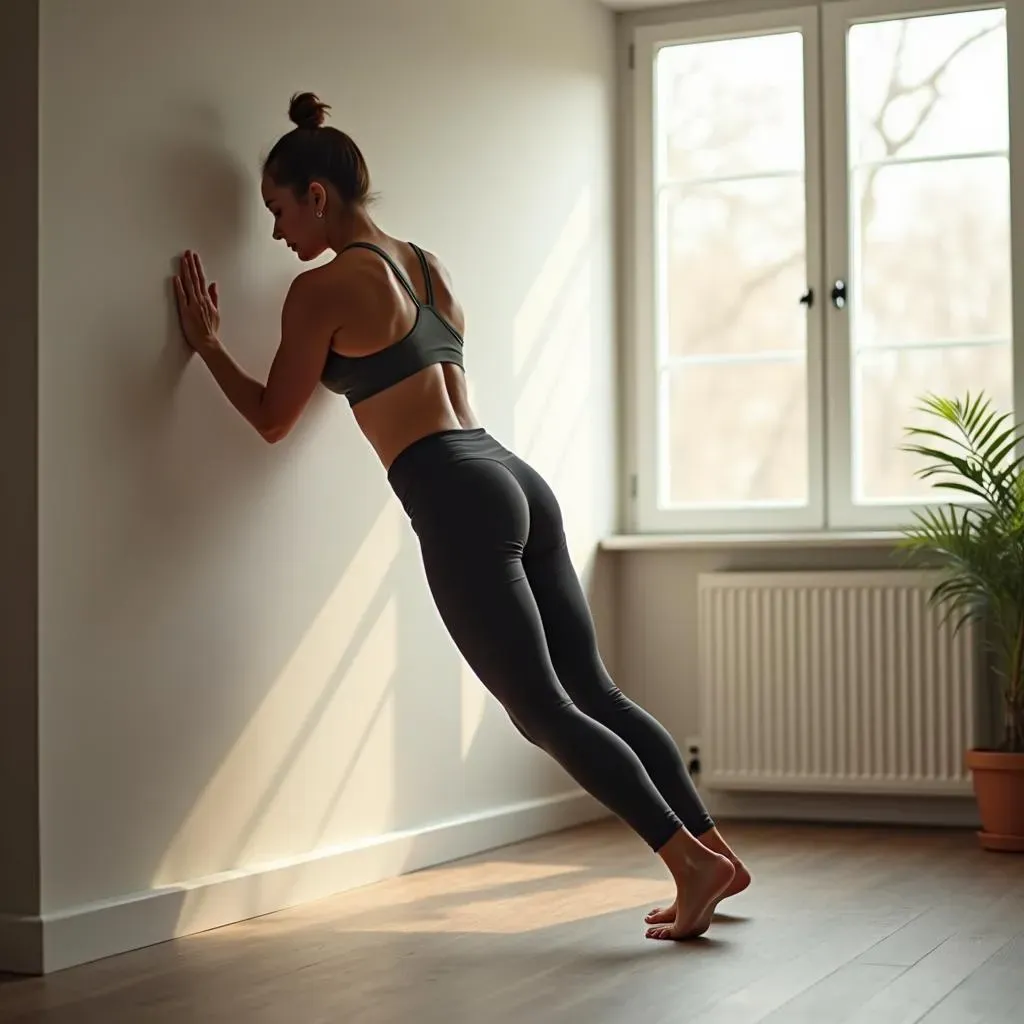
Building a Routine: Consistency is Key
Making Your Wall Pilates a Habit
So you've tried the wall roll down, felt the burn of the wall squat, and maybe even attempted a wall bridge. You know the moves work. But the real magic of an **at home wall pilates workout** isn't just doing it once; it's doing it consistently. Life throws curveballs – deadlines loom, kids need rides, that perfect show isn't going to binge itself. It's easy to let fitness slide. However, carving out even 15-20 minutes a few times a week for your wall work can make a significant difference. Think of it not as another chore, but as a small investment in feeling stronger, more mobile, and more in control of your body. Find a time that works for you, whether it's first thing in the morning before the world wakes up, a midday reset, or an evening wind-down.
Troubleshooting Your At Home Wall Pilates Workout
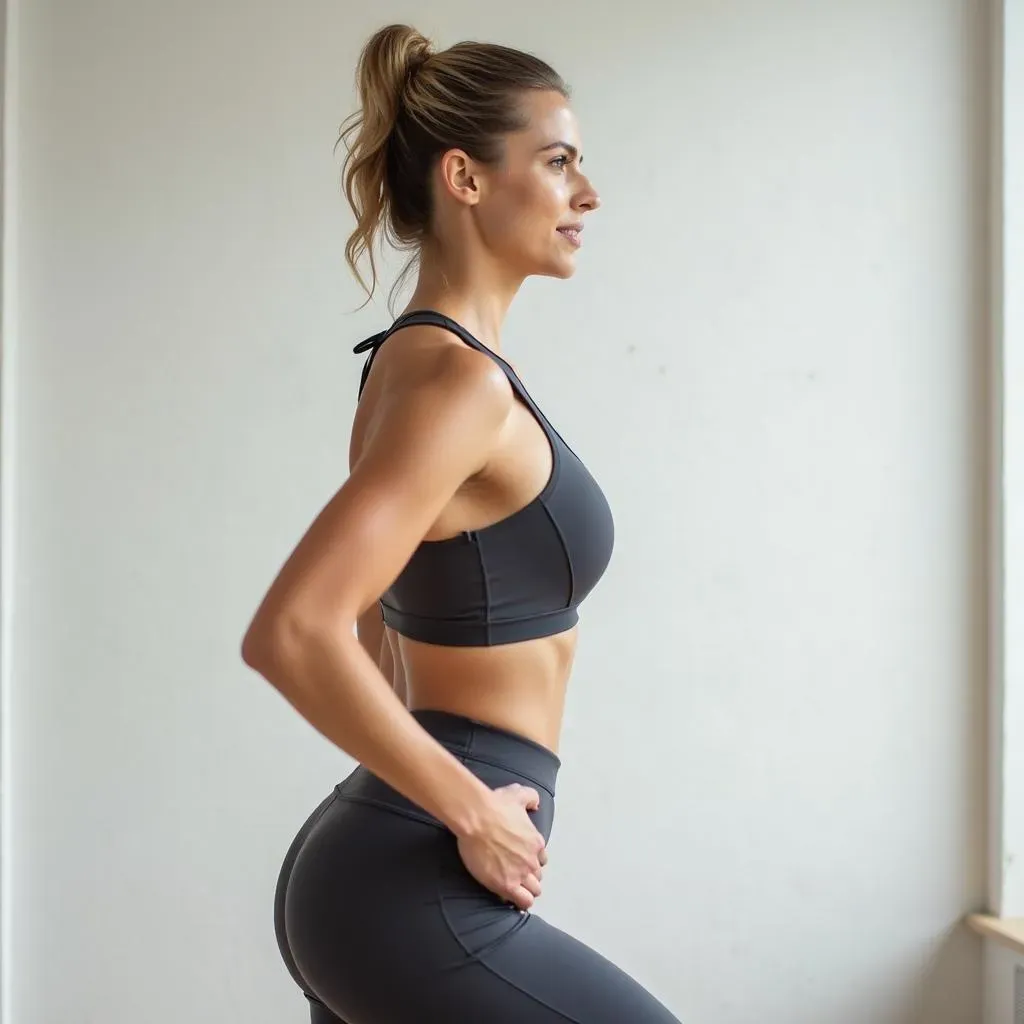
Troubleshooting Your At Home Wall Pilates Workout
When the Wall Feels Like a Foe, Not a Friend
so you're leaning into your **at home wall pilates workout**, trying that Wall Roll Down or the Wall Bridge, and something just feels... off. Maybe your back isn't hitting the wall right, or you feel strain in the wrong places. It happens. The wall is great for feedback, but sometimes that feedback is just telling you you're doing it weirdly. Don't get discouraged. It's usually a simple fix. Often, it's about your distance from the wall or the angle of your feet. For instance, in the Wall Squat, if your knees are shooting over your toes or your back is arching away, you might be standing too close or too far. Adjust your foot placement gradually until you feel stable and can press your whole back into the wall without strain.
Sometimes, the issue is simply understanding the movement's intention. Pilates is precise. If you're rushing or just going through the motions, you'll miss the core engagement that makes it effective. Slow down. Focus on the exhale during the effort part of the move. Think about *which* muscles you're supposed to be working. Are you trying to lift your hips in the bridge using just your back, or are you initiating from your glutes and hamstrings, articulating through your spine? Paying attention to these details makes a huge difference in your **at home wall pilates workout** experience and results.
Common Wall Pilates Form Checks:
- Wall Squat: Are knees over ankles? Is lower back pressed into the wall (gentle curve is okay, but no big gap)?
- Wall Roll Down: Are you peeling spine segment by segment, or just bending at the waist?
- Wall Bridge: Are you lifting hips by articulating spine, or just pushing up rigidly? Are feet hip-width apart?
- Wall Hundred: Is lower back pressed into the floor? Are legs extended from hips, not just knees locked?
Staying Consistent When Your Couch Calls
Let's be real. Having an **at home wall pilates workout** option removes the gym excuse, but it introduces a new one: the siren song of your sofa. Motivation waxes and wanes. Some days you're ready to tackle the wall like a champ; others, convincing yourself to get off the floor after the first Wall Roll Down feels impossible. This is normal. The key isn't perfect adherence, it's showing up imperfectly. A 10-minute session is infinitely better than zero minutes. Don't aim for an hour-long masterpiece every time. Aim for consistency, even if it's just a few key moves.
Try linking your wall workout to an existing habit. Maybe you do it right after you brush your teeth in the morning, or while your coffee brews. Schedule it in your calendar like you would a meeting. Tell someone you're doing it – a little accountability can go a long way. And don't underestimate the power of tracking your progress. Even noting down which moves you did or how many reps can provide a sense of accomplishment that fuels future sessions. Your **at home wall pilates workout** should feel empowering, not like a punishment. Find ways to make it a small, manageable part of your day.
Making Your Wall Pilates Workout Stick
So, you've explored the basics of an **at home wall pilates workout**. You've seen that all it really takes is some floor space, a wall, and a willingness to see what happens when you lean into it. The real magic isn't in some complex sequence or expensive gear; it's in showing up consistently. These aren't flashy, high-impact moves designed for Instagram reels, but they build foundational strength that actually matters for how your body feels day-to-day. It won't solve all your problems, but making a few minutes at the wall a regular thing is a more sustainable path to feeling stronger than chasing the latest impossible fitness trend.
